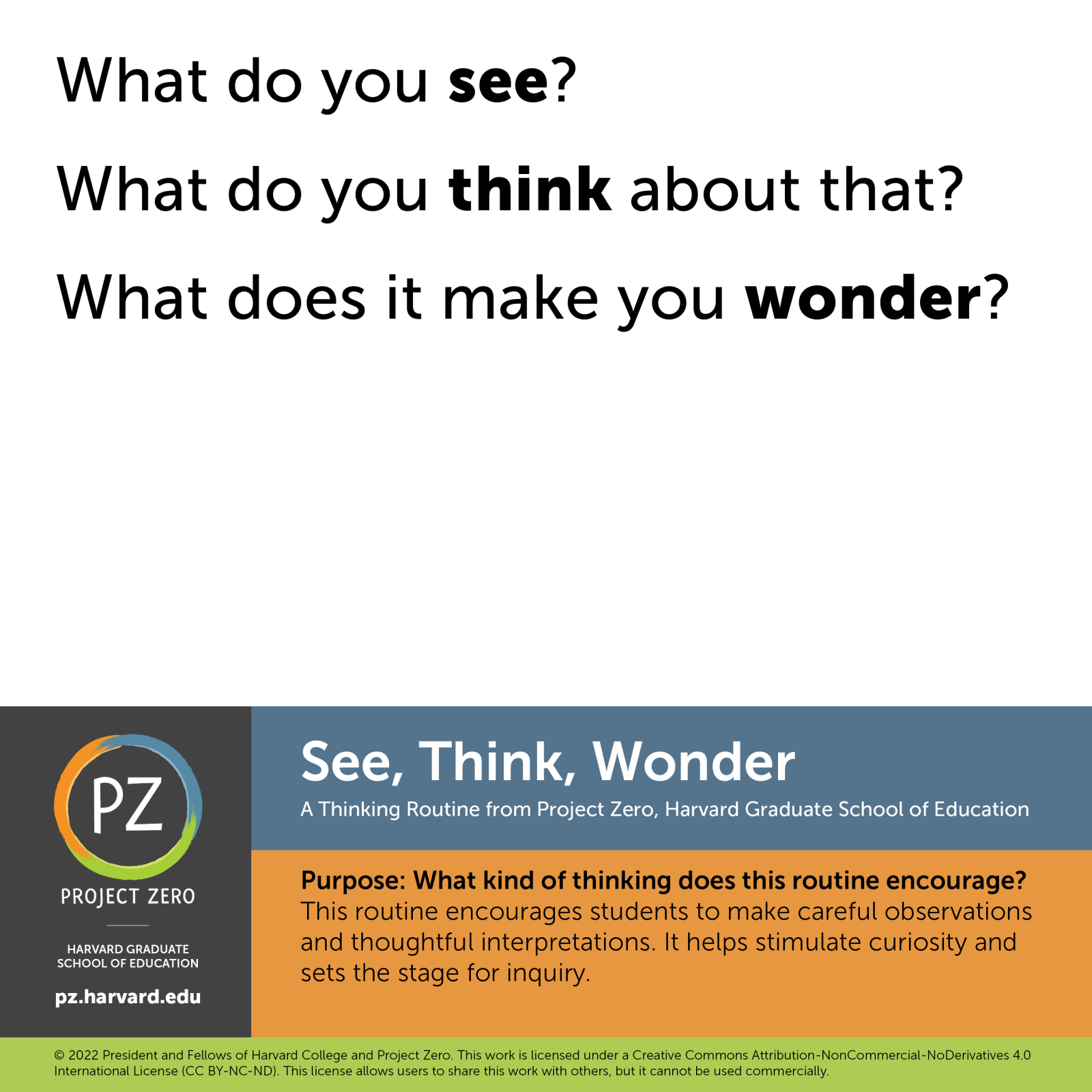Stephanie Norby's collections
William Healey Dall
A sampling from the Smithsonian pan-institutional collections documenting the work of William Healey Dall.
 Stephanie Norby
Stephanie Norby
12
What Makes You Say That? -- Looking at Bird Beaks
<p>Watch these videos of birds. Use the "What Makes You Say That?" visible thinking routine, one of the visible thinking routines developed by Project Zero. This routine helps students describe what they see or know and asks them to build explanations. This is an introductory activity for a unit on birds or adaptation. The activity's strategy is intended to be used with the whole class to have a conversation about the topic. </p>
<p>First, watch the video on gannets -- without sound -- using the prompts "What's going on? What do you see that makes you say that?" Discuss responses. Then watch the video with sound and compare.</p>
<p>Second, watch one or more of the short videos documenting a Black-backed Woodpecker, Bee Hummingbird, New Zealand Falcon, Laughing Kookaburra, Rose-breasted Grosbeak, Oystercatcher, American Goldfinch, Osprey and Orange-crowned Warbler. Focus students' attention on the beak, asking them to describe how birds use their beaks and citing evidence to support their claims.</p>
 Stephanie Norby
Stephanie Norby
12
Tree Banding
Tree banding is one of the activities included in the SHOUT program, a two-year investigation of land and water issues led by Smithsonian scientists. Watch the videos to learn how to band trees and collect data about their growth and why this information matters.
 Stephanie Norby
Stephanie Norby
6
Seeing, Thinking and Wondering About Space Food
Astronauts need food and good nutrition to stay healthy in space. This collection looks at the challenges in preparing, packaging, transporting, and storing food in space. What innovations were required? What problems needed to be solved? How did the problems change over time?
This collection uses the "See Think Wonder" visible thinking routine developed by Project Zero at Harvard University. This strategy encourages students to make careful observations and thoughtful interpretations. It helps stimulate curiosity and sets the stage for inquiry.
First, Watch the Apollo 11 TV broadcast of July 22, 1969 of an astronaut eating in space (22 seconds). Use the "See Think Wonder" routine to stimulate interest among students about the problems encountered by astronauts when trying to eat. Ask, "What do you see? What do you think about that? What does it make you wonder?" Next look at the second image in the collection, "Space Food, Meal Package, Day 11, Meal C, Apollo 11 (white)". Repeat the questions examining both the food and the label.
Next, ask students to search the collection for "space food" and assemble one meal -- breakfast, lunch or dinner. Compare the different meals created by students using the see, think, wonder routine. For example, what kinds of foods do they see (or not see)? How are the foods packaged and how does it change over time? How are the more recent foods different from the first meals? The purpose of this discussion is to help students see how engineering problems and solutions evolve over time. Ask students, what impact would longer missions have on packing meals for space?
Watch the video, "Three Types of Food," and compare the information in the video with student ideas. Then ask students to propose solutions for the current question -- "How can we grow food in space?"
 Stephanie Norby
Stephanie Norby
5
Seeing the Civil War through Different Perspectives Using Photographs
A carte de visite is a photograph the size of a visiting card, and such photograph cards were traded among friends and visitors and saved in albums. This teaching collection includes carte de visites of people who lived during the Civil War. The purpose of the collection is to consider their different points of view and experiences. Each student receives a different carte de visite and researches that person. During classroom discussions of Civil War events, students comment from the perspective of the person they researched.
 Stephanie Norby
Stephanie Norby
41
Scientific Argumentation
The archived sessions from a two-part online course led by Dr. Victor Sampson, Associate Professor of STEM Education at the University of Texas at Austin, on scientific argumentation -- helping students to identify, evaluate and support claims. See Smithsonian collections used during the sessions at https://s.si.edu/1L0YP81 .
 Stephanie Norby
Stephanie Norby
2
Martin Luther King Portraits
Examine these different portraits of Martin Luther King Jr.
 Stephanie Norby
Stephanie Norby
8
Mapping the Past: Using Technology to Understand the Battle of Gettysburg
This teaching collection and student interactive are about applying cutting-edge technology to inform our understanding of what happened at the Civil War Battle of Gettysburg in 1863. Ask students to watch the video, read the article and use the interactive to see the impact of geography on the final outcome of the Battle.
 Stephanie Norby
Stephanie Norby
3
Investigating a Place: California
What defines a place? Examine this collection of images from or about California to answer these questions: What are its unique set of physical and cultural conditions? How do these physical and cultural conditions interact? How is California connected to other places? What are the consequences of human activity on the cultural and physical landscape? Ask students individually or in small groups to create a collection in Learning Lab to represent the physical and cultural characteristics of another place (city, region, state). Using these collections, ask students to write summary statements describing the unique human and physical characteristics of places researched. Discuss student collections and what makes each place unique.
 Stephanie Norby
Stephanie Norby
68
Innovations in Coffee Cup Lids
Sometimes innovations are about something completely new and sometimes innovations are about small refinements in design. What can we learn about innovation from looking at something as ordinary as a coffee cup lid? Read the article about coffee cup lids and write a description for one of the lids, capturing its unique qualities. How do changes in coffee cup lids reflect larger changes in our society? Predict what will be the next innovation .
 Stephanie Norby
Stephanie Norby
57
Innovations and Milestones in Flight
This teaching collection includes a teaching poster, website, video, and digital images about the six milestones of flight.
 Stephanie Norby
Stephanie Norby
11















